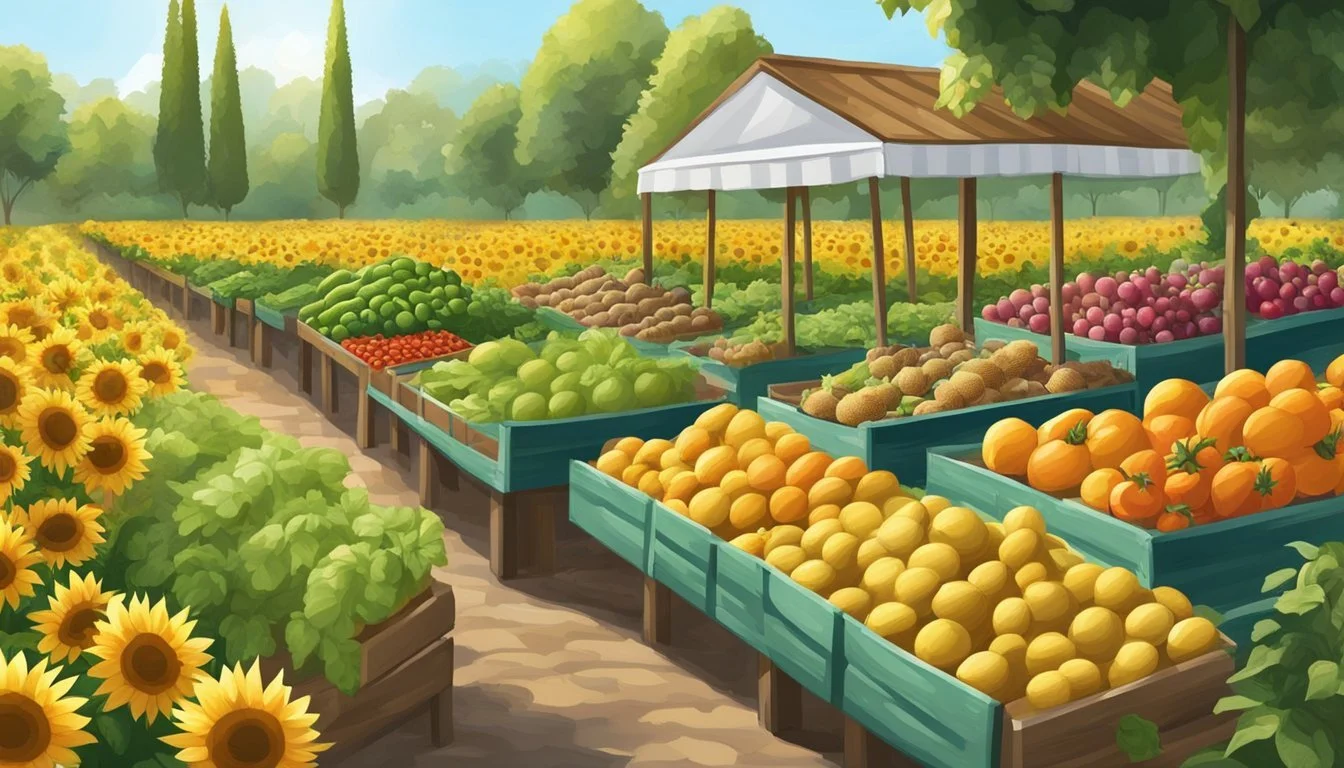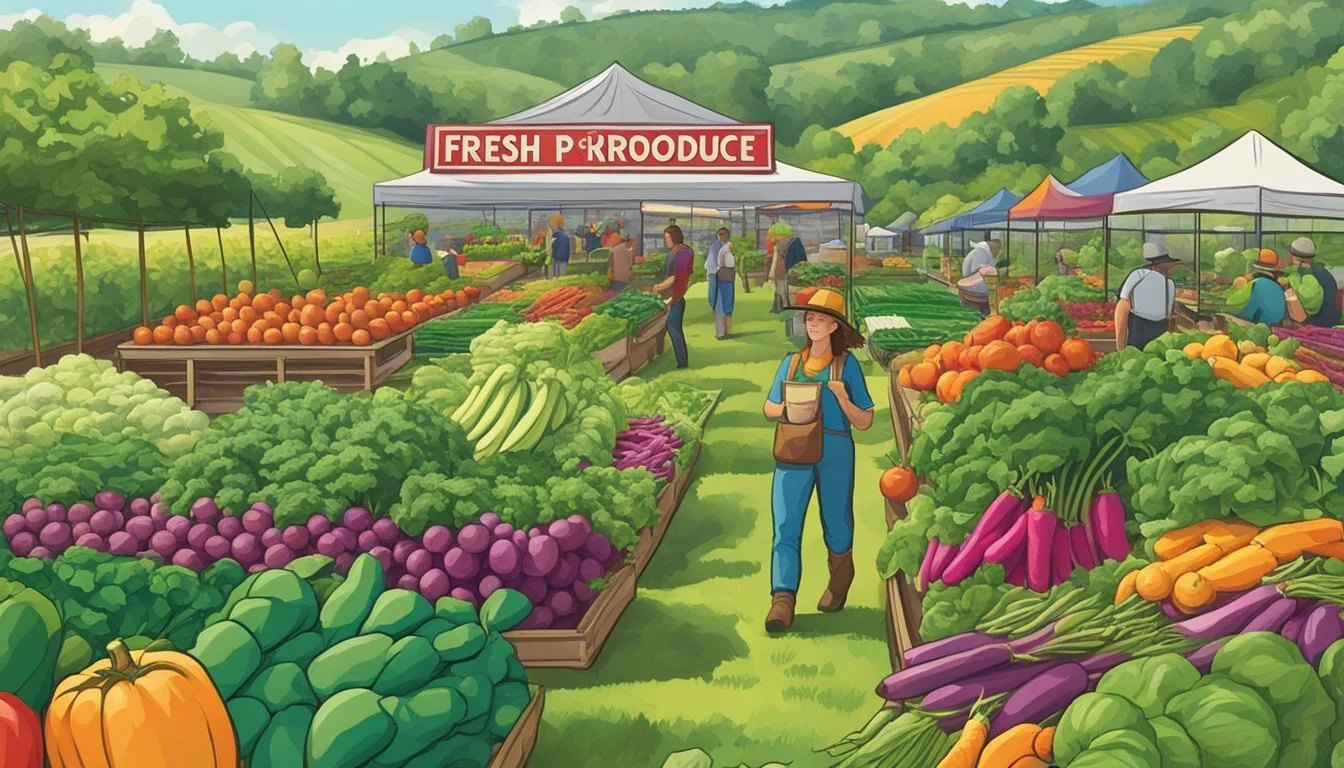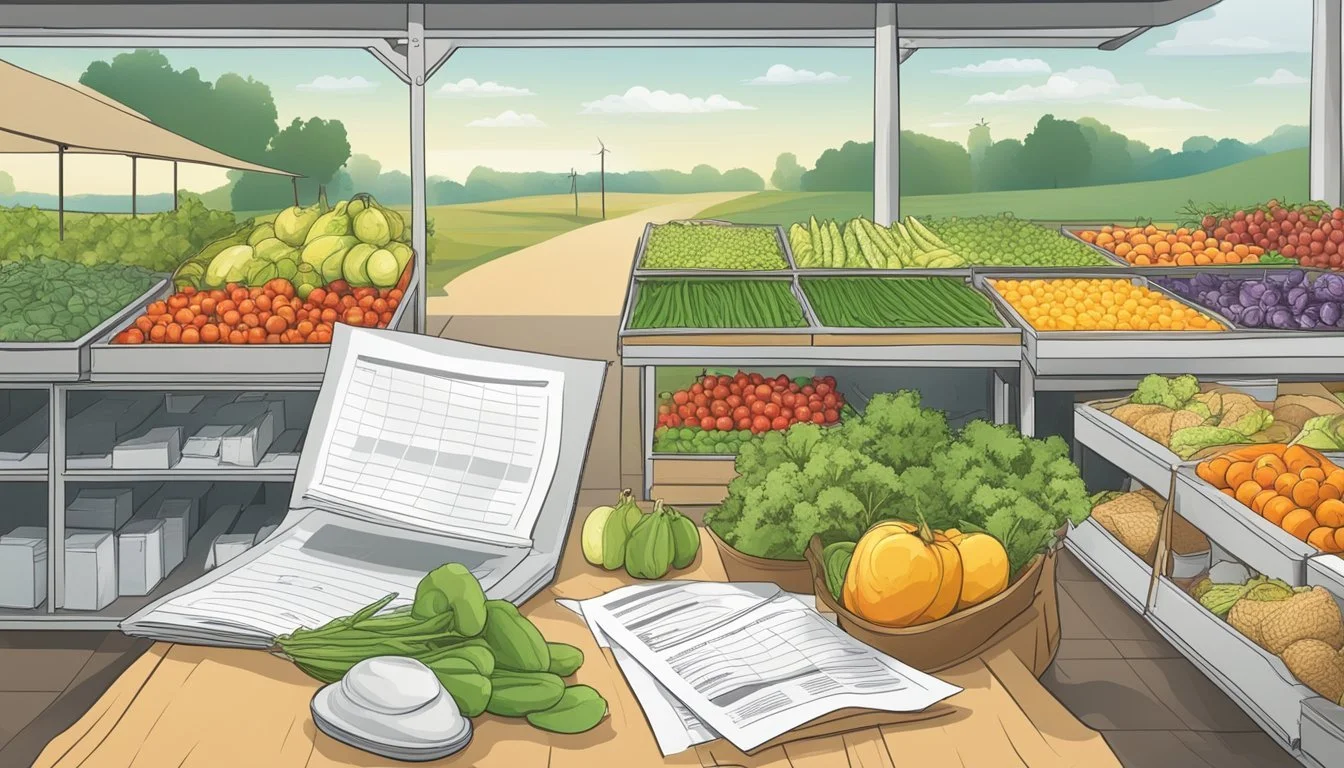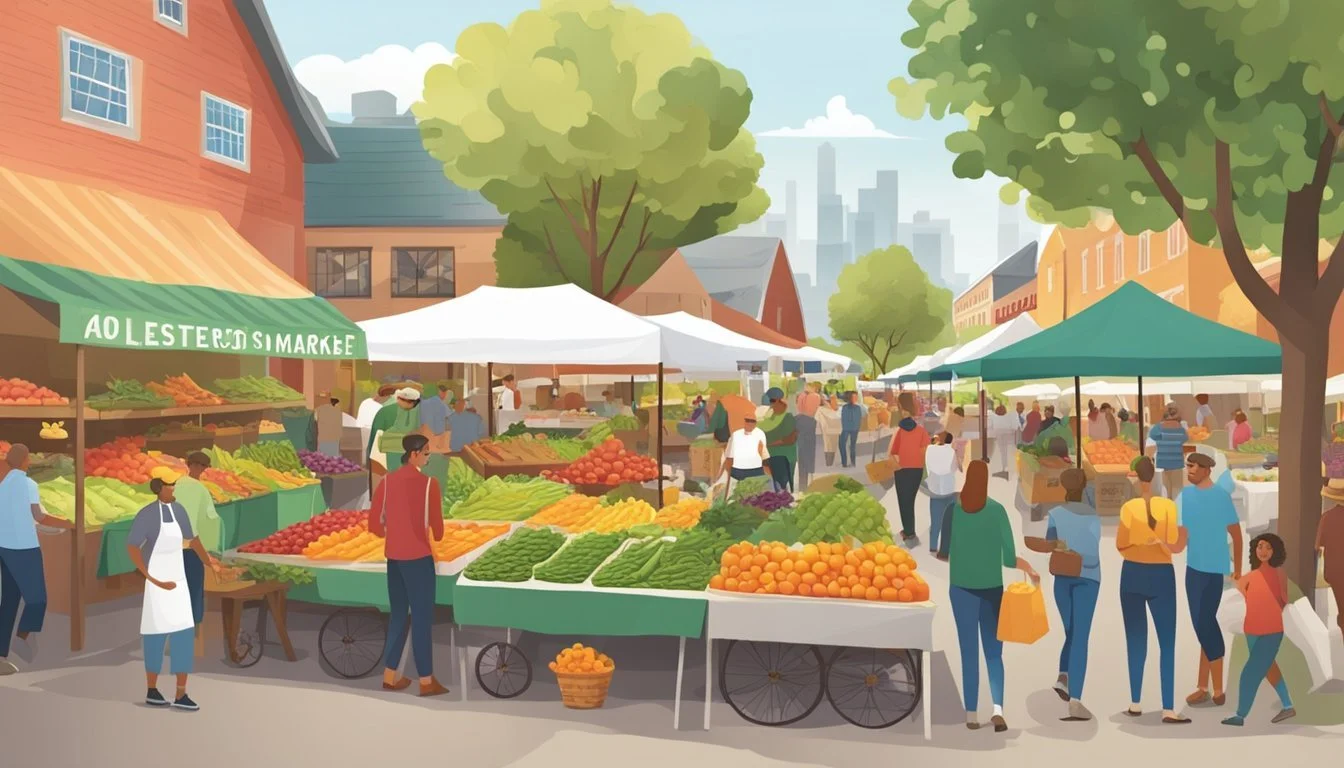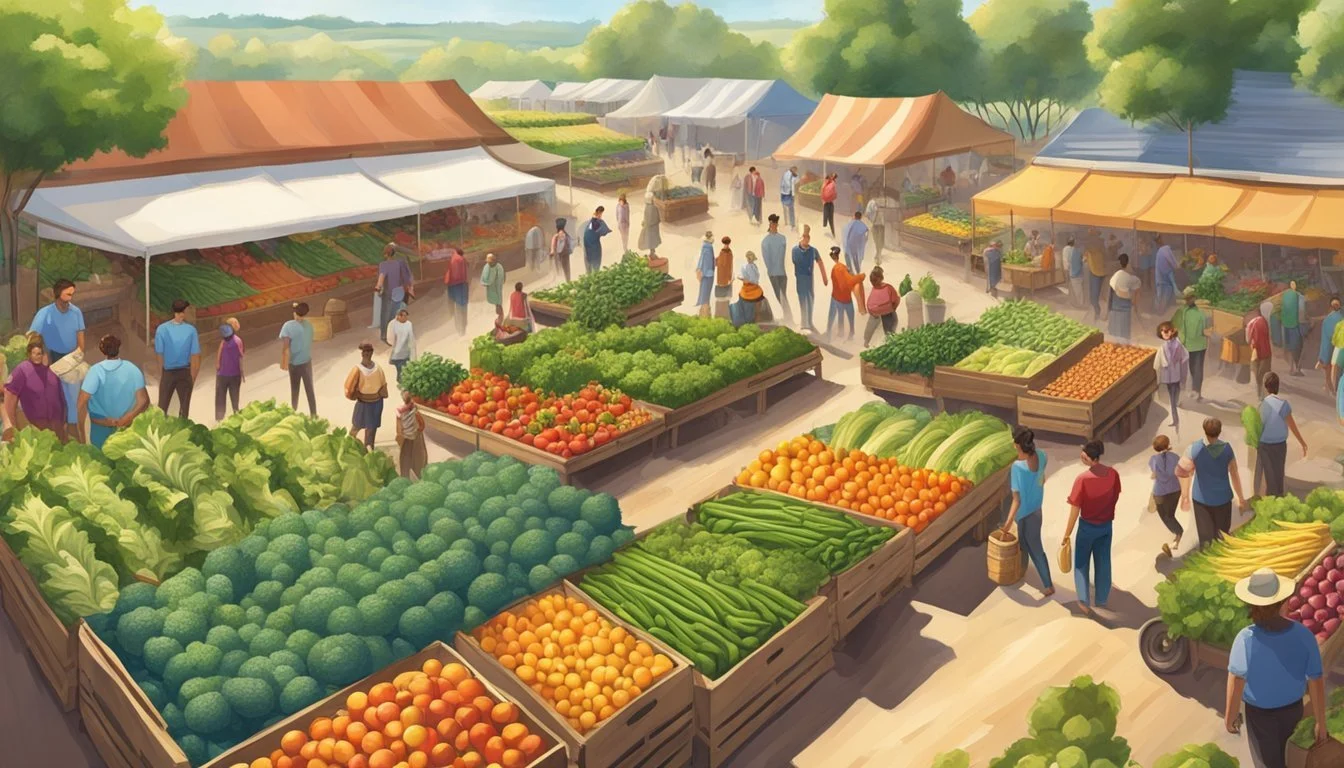How to Grow Your Own Produce to Sell at the Farmers' Market
A Step-by-Step Guide
Growing produce to sell at the farmers' market is an ideal way for individuals and small-scale growers to engage with their community while also earning an income. The process begins well before seeds are sown, with careful planning and preparation. Market gardeners must select crops that are not only popular among consumers but also viable for their specific growing conditions. It’s essential to research which fruits, vegetables, or herbs can thrive in one's local climate and soil, as the right selection can significantly impact profitability and sustainability.
Selling at a farmers' market requires understanding both the cultivation of produce and the nuances of market operations. Growers need to maintain meticulous records that detail the costs of production to ensure they price their products adequately to cover expenses and generate a profit. Identifying a niche, such as organic or heirloom varieties, can distinguish one’s offerings from other vendors, attracting a loyal customer base seeking unique or specialized items.
Community Supported Agriculture (CSA) models further offer a way for growers to secure financial stability by collecting payments upfront from consumers who receive a portion of the harvest throughout the season. This pre-payment can be instrumental in funding the initial costs of seeds, soil amendments, and other necessary supplies, ultimately making the growing season financially feasible. Ensuring quality, diversifying products, and building strong customer relationships are crucial for success in the competitive and community-driven environment of a farmers' market.
Understanding the Farmers' Market Landscape
Before venturing into selling at farmers' markets, vendors must navigate the dynamic landscape that influences their success. This involves meticulous research on local demand, analyzing the competition, and staying informed on market trends.
Researching Local Demand
Vendors should conduct thorough market research to identify the fruits, vegetables, or other products that are in high demand in their community. This might involve:
Surveys: Engaging with potential customers through surveys to understand their preferences.
Observation: Visiting local markets to see what shoppers frequently purchase.
Community Engagement: Participating in local events and forums to gauge food trends and dietary habits.
Analyzing Competing Vendors
Understanding one's competitors is crucial in carving out a niche at the farmers' market. Vendors should:
List Competitors: Create a list of other vendors at the market and what they sell.
Evaluate Offerings: Identify gaps in the market or products that are oversaturated.
Differentiation: Consider how to differentiate their offerings, whether through unique varieties, organic certification, or value-added products.
Future Trends in Farmers' Markets
Staying ahead involves anticipating changes in consumer behavior and market regulations. Vendors can:
Attend Workshops: Keep abreast of agricultural developments and consumer trends.
Technology Adoption: Incorporate technology for marketing and sales tracking.
Sustainability: Align with trends towards sustainability and locally-sourced foods, which could affect packaging, product selection, and farming practices.
Planning Your Farming Operations
In launching a successful farming venture for the farmers' market, one must make informed decisions about what produce to grow, adhere to sustainable practices, and consider how to effectively increase production as demand grows.
Choosing Profitable Produce
Farmers should select vegetables, herbs, and microgreens that not only thrive in their region but also cater to market demands and yield a high profit margin. Heirloom varieties, known for their unique flavors and appearances, are particularly appealing to customers seeking quality over quantity. It's also beneficial to consider the local culinary trends, as they drive consumer interest. For instance, a grower might choose:
Vegetables: Tomatoes, lettuce, and peppers for their popularity and versatility in cooking.
Herbs: Basil, cilantro, and mint, due to their high demand in kitchens.
Microgreens: Arugula, radish, and pea shoots for their short growth cycles and premium prices.
Sustainable and Organic Farming
Sustainability and organic growing practices not only appeal to eco-conscious consumers but can also result in higher-quality produce. Farmers should focus on techniques that conserve water, enhance soil fertility, and minimize the use of synthetic fertilizers and pesticides. Adopting a crop rotation system and using compost are key strategies that reflect a commitment to sustainable agriculture. They might also obtain organic certification to boost credibility and market value.
Scaling Your Production
As demand increases, farmers must scale their operations efficiently. Starting small allows one to learn and adjust growing practices before expanding. They should develop a solid business plan that includes:
Short-term and long-term goals: Clearly defined objectives for production volume and variety.
Investment in infrastructure: High-quality seeds, irrigation systems, and perhaps greenhouses for year-round growing.
Labor management: Hiring additional hands or incentivizing family and community involvement through work-trade arrangements.
Proper scaling ensures that a farm can meet the rising demand without compromising product quality or sustainable methodologies.
Legal and Financial Considerations
When entering the world of farmers' markets, it's critical for vendors to navigate the legal and financial landscape effectively. Securing the right permits and insurance, understanding applicable taxes and fees, and accurately calculating costs and profits are pivotal to ensuring a successful venture.
Securing Permits and Insurance
To sell produce at farmers' markets, vendors need to acquire the necessary permits. The requirements vary by state and local jurisdictions, but typically involve a vendor's permit and possibly a health department permit if selling value-added products or prepared foods. Vendors should also consider obtaining liability insurance to protect against legal claims that might arise from their operations, such as customer injuries or property damage.
Understanding Taxes and Fees
Sales at farmers' markets are generally subject to state sales tax. Vendors must register with the state's Department of Revenue to collect and remit these taxes. Additionally, the market itself might charge vendor fees for booth space, which can vary significantly depending on the market's size and location. These fees should be factored into the overall budget.
Calculating Costs and Profits
To ensure profitability, vendors must diligently track their expenses and revenue. Essential costs include seeds, equipment, labor, and transportation. The price of goods should reflect both these costs and the market average to remain competitive while securing a profit. A simple table can help clarify this:
Expense Categories Estimated Costs Seeds $X Equipment $Y Labor $Z Transportation $W Total Costs $Total
Ensuring prices cover the Total Costs plus the desired margin will lead to a sustainable model. Regularly reviewing and adjusting prices is important to respond to market changes and cost fluctuations.
Marketing Your Produce
To succeed at the farmers' market, a vendor needs to master not just growing produce but also the art of marketing. A strong brand, eye-catching packaging, and strategic use of social media can enhance visibility. Additionally, building relationships with restaurants and food hubs can open up new avenues for sales.
Branding and Packaging
Success at the farmers' market often begins with memorable branding. Producers should design a brand that resonates with their target market, including a compelling logo and a unified theme across all materials, like business cards and signage. Organic certification can be a powerhouse in branding; it serves as a badge of quality and commitment to sustainable practices. Packaging should not only protect and preserve produce but also entice customers with its aesthetic. This could mean using biodegradable materials or creative designs that reflect the farm's values and story.
Leveraging Social Media
Social media platforms are indispensable tools for marketing produce. Platforms like Instagram and Facebook allow farmers to connect with customers by sharing enticing photos of fresh produce, quick updates about what’s available, and the story behind their farm. These posts should include clear and engaging images, hashtags related to farming and local food, and updates on market days to remind and encourage followers to visit their stall. Strategic use of social media can turn followers into loyal customers.
Connecting with Restaurants and Food Hubs
Apart from selling directly to consumers, producers can connect with local restaurants and food hubs, which often seek fresh, high-quality ingredients for their menus. Producers should approach these businesses with a clear offer, noting any organic certifications and the unique selling points of their produce. Creating a professional-looking catalog or list of available products can help facilitate these connections. Selling to food hubs also diversifies revenue streams and can lead to larger volume sales.
Setting Up at the Farmers' Market
Successful vendors know that a thoughtful setup at the farmers' market can have a significant impact on sales. From creating an attractive display to implementing efficient point-of-sale systems, each element should be considered carefully to maximize the appeal and functionality of the market booth.
Creating an Attractive Display
A vendor's booth is their storefront, and making it visually appealing is crucial. They should start with a sturdy tent to shelter their produce and customers from the elements. Tables need to be arranged in a way that maximizes space and showcases the produce effectively. Tablecloths add a touch of professionalism and can cover any unsightly boxes or storage underneath. It's essential to create height and dimension in the display; using baskets, wooden crates, or raised shelves helps achieve this and makes produce more visible. A well-made, visible sign clearly displaying the farm's name not only brands the booth but also helps customers remember them for future visits.
Display Essentials:
Tent
Tablecloths
Signage
Baskets and crates for visual appeal
Effective Pricing Strategies
Pricing should reflect the quality and value of the produce. Clear, easy-to-read price tags or a sign listing prices will prevent any confusion and expedite purchases. It's critical to research the local market to ensure prices are competitive yet fair for the effort and cost invested in growing the produce. Consider offering deals for bulk purchases, which can move more product quickly and appeal to customers looking for value.
Pricing Tips:
Competitive analysis for setting prices
Visible and clear pricing signage
Bulk purchase deals
Implementing a Point-of-Sale System
An efficient point-of-sale system streamlines transactions and can enhance the customer's shopping experience. Modern POS systems can accept various payment methods, including credit cards and digital payments, which are crucial as fewer customers carry cash. Keeping track of inventory and sales data also becomes more manageable with a digital system, allowing for better planning and restocking.
POS Considerations:
Accept multiple forms of payment
Track sales and inventory
Improve transaction speed and accuracy
Enhancing the Customer Experience
To elevate the experience at a farmers' market, vendors focus on providing exceptional service and value. Through direct interaction, sharing culinary insights, and offering incentives, they build a loyal customer base.
Engaging with Customers
Vendors should maintain eye contact and converse with visitors, giving each individual attention to foster a welcoming atmosphere. They can enhance engagement by standing at eye level and showing enthusiasm in discussing their produce. Clear signage with product names and prices prevents any confusion and facilitates a smoother transaction process.
Offering Recipes and Tips
Providing customers with recipes and tips for using the produce can differentiate a vendor from others. A vendor may display recipe cards near specific vegetables or fruits, advising on preparation methods or suggesting meal ideas. This not only adds value but also may encourage larger sales as customers are inspired to try new dishes.
Example of Offering Recipes and Tips:
Produce Item Recipe Idea Zucchini Grilled Zucchini (What wine goes well with grilled zucchini?) with Herbed Bread Crumbs Tomatoes Fresh Tomato Bruschetta Apples Classic Apple Crisp
Providing Samples and Discounts
Offering free samples allows customers to taste the quality of the produce, potentially leading to increased sales. Vendors might also consider implementing a discount system, such as a percentage off for purchases over a certain amount or a loyalty program where frequent purchases lead to a free item.
Discount and Sampling Strategy:
Free Samples: Small bites of new or seasonal items to entice customers
Bulk Discounts: Reduce price by 10% for purchases over $20
Loyalty Program: Buy ten items, get one free
These strategies cultivate an enjoyable market experience, prompting customers to return and spread the word about the quality and service they received.
Expanding Your Reach
To effectively expand your reach in the farmers' market business, producers must consider various sales avenues, collaborate with community initiatives, and harness the power of digital platforms.
Exploring Alternative Sales Avenues
Farmers can broaden their customer base beyond the traditional market stall by setting up a farm stand. This extends their ability to sell directly to consumers on their own property. Additionally, engaging in trade with local restaurants or shops that prioritize locally-grown produce can create steady, mutually beneficial relationships between the grower and local businesses.
Partnering with Local CSAs
Integrating with Community Supported Agriculture (CSA) programs allows farmers to secure a channel of revenue before the harvest season begins. They can achieve this by offering shares of their harvest in advance to individuals who value supporting a local grower. This partnership not only ensures financial stability but also fosters community engagement.
Building an Online Presence
Creating an online store is a strategic move that provides customers with a convenient option to purchase produce. By utilizing a well-designed website and active social media accounts, farmers keep their audience informed and engaged. It's crucial to update the online platforms regularly with images of fresh produce, farm updates, and purchasing information to maintain a clear and professional image.
Operating within Regulations
Vendors must navigate a complex landscape of rules and regulations to successfully sell produce at farmers' markets. Compliance with health and safety regulations is essential, as is a deep understanding of agriculture policies that impact the supply chain.
Following Health and Safety Rules
At a farmers' market, the vendor is responsible for ensuring that their produce meets all health and safety standards. They must:
Label all products clearly, indicating any allergens or food processing methods, like organic or non-GMO, to inform consumers.
Maintain clean handling and selling practices to prevent contamination, and may need to provide proof of these practices to a board of directors or regulatory body.
Staying Informed about Agriculture Policies
Agriculture policies can change frequently, affecting the entire supply chain. Vendors should:
Stay updated on local and federal agriculture policies, which can influence what can be sold and the practices that need to be followed.
Attend meetings or workshops offered by the market's board of directors or local agricultural extension services to stay informed on current rules and regulations.
Looking to the Future
As the agricultural landscape evolves, farmers must focus on cultivating unique produce and staying responsive to the ebb and flow of market trends. The future of selling produce at farmers' markets leans towards innovation in crop selection and adaptability in business strategies.
Innovating with New Varieties
Farmers are increasingly turning to new and rare varieties of produce to stand out in competitive marketplaces. One can notice an uptick in the cultivation of heirloom tomatoes, known for their diverse flavors and colors, attracting both chefs and home cooks. Similarly, the introduction of zucchini in unusual shapes or with distinctive flavor profiles has the potential to garner attention. Attempting to grow these unique varieties not only stimulates interest among consumers but also may offer higher price points due to their rarity and the specialized experience required to successfully harvest them.
Adapting to Market Changes
The key to sustained success in farmers' markets lies in one's ability to adapt to changing market demands. This may include:
Diversifying the selection of crops to include staples like cucumbers, which are consistently in high demand.
Timing harvests to align with seasonal trends and consumer expectations.
Monitoring consumer preferences to understand which products are favored.
Such adaptability ensures that farmers can maintain a strong customer base and react swiftly to shifts in the market—whether it's an emerging food trend or a sudden demand for organic produce. By staying informed and flexible, farmers invest in their future at the marketplace.

